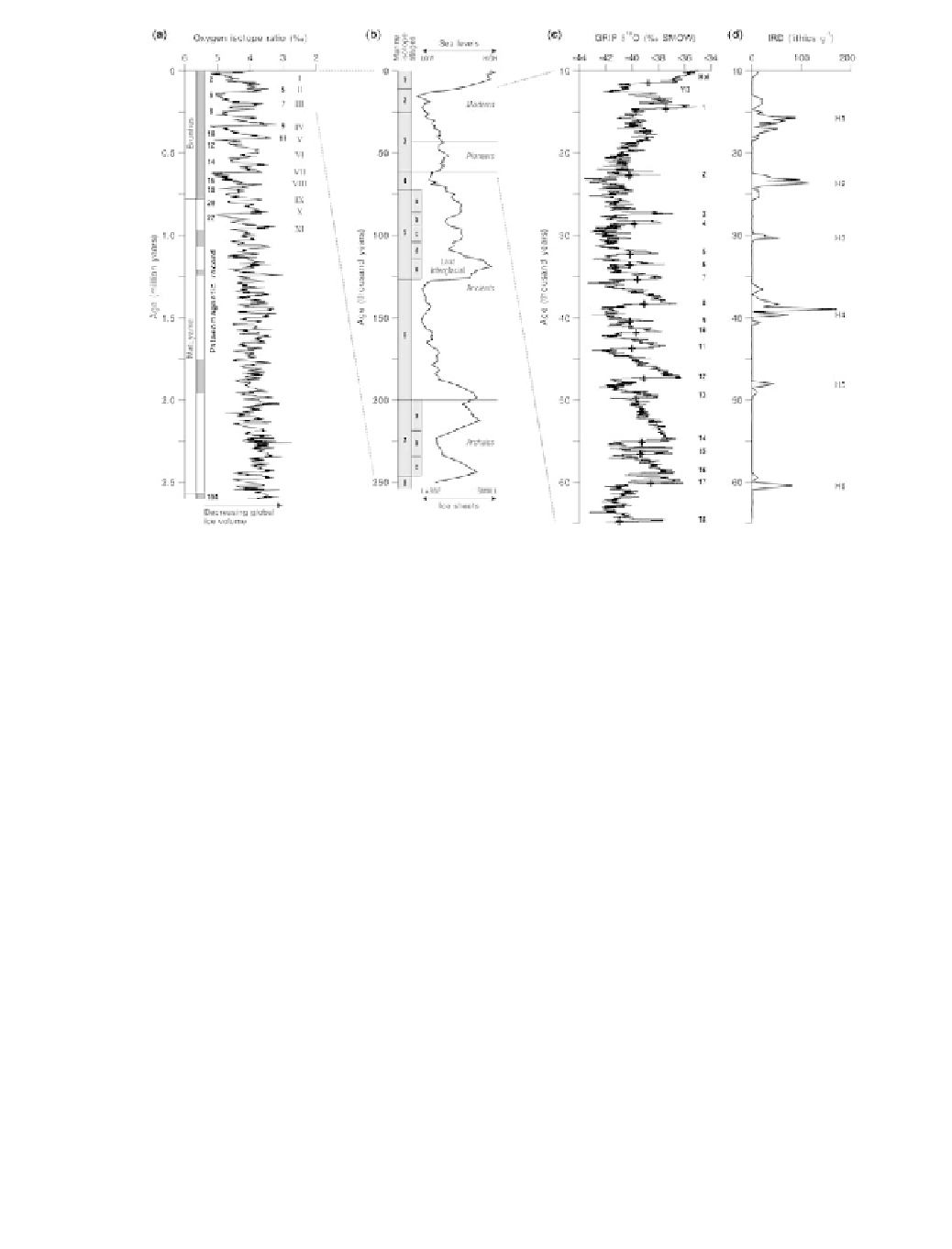Geoscience Reference
In-Depth Information
Figure 13.5
(a) The long oxygen isotope record from ODP Site 677 in the tropical
Pacifi c Ocean showing changes in global ice volume and shifts from glacial to inter-
glacial conditions for the entire Quaternary Period. Note that this record extends back
beyond 2.5 million years and the record contains several magnetic reversals. Compare
to fi gure 13.3. Roman numerals mark Terminations I to XI (modifi ed from Shackleton
and Crowhurst 1996). (b) The marine oxygen isotope record for the last 250,000 years
in more detail showing the subdivisions within the interglacials of MIS 5 and MIS 7.
The terms used by Gamble (1994) for the Palaeolithic occupation of Europe are also
shown. Towards the end of MIS 3 the Neanderthals (Ancients) were replaced by Cro-
Magnons (Moderns). (c) Abrupt changes in temperature from 60 to 10 ka shown in a
high-resolution ice core record from Greenland (after Dansgaard et al., 1993). (d) The
record of ice-rafted debris (IRD) from marine sediments in the North Atlantic between
60 and 10 ka. These discrete layers of coarse material mark the Heinrich Events of the
last cold stage (modifi ed from Roucoux et al., 2005 and sources therein).
lution when the glacial cycles change to a dominant 100,000-year cycle and there
is a much larger contrast in ice volume between cold and warm stages.
The next curve (fi gure 13.5b) shows the last 250,000 years in more detail along
with the terms from Gamble (1994) for the human occupation of Europe in the
Palaeolithic. The Ancients are the Neanderthals and the Pioneers are the fi nal Nean-
derthal groups who disappeared from the archaeological record in Europe in MIS
3. Figure 13.4 showing the transects across Europe discussed above was published
in 1971 and it can be argued that it refl ects a more general tendency for some
Quaternary researchers to focus on the palaeogeography at the
extremes
of glacial
and interglacial conditions. To some extent the oxygen isotope records reinforced
this view as Porter (1989, p. 245) has argued:





